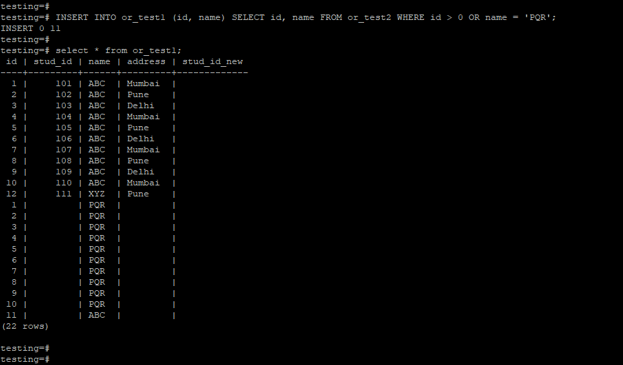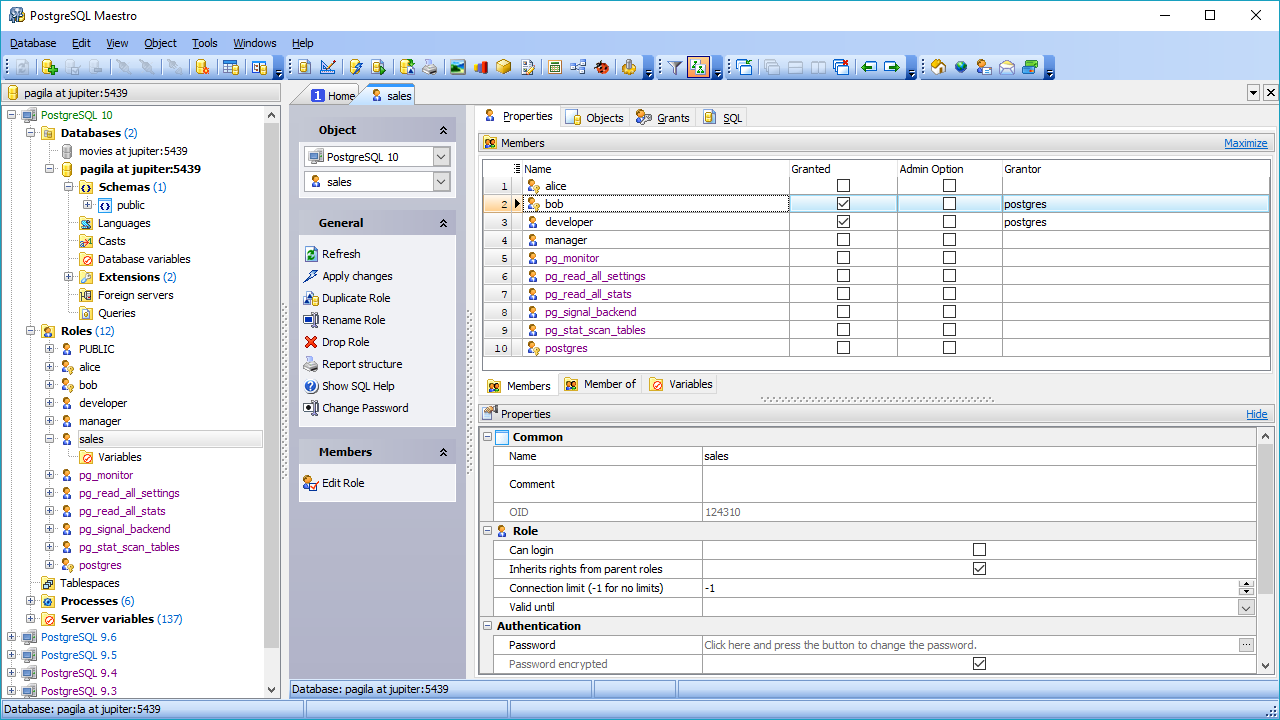
When using FROM you should ensure that the join produces at most one output row for each row to be modified. The moral of the story always check if the join produce a unique result. While using a descending order in the CTE the column is updated to the value of c (lowest value) id|att| With the ascendig order the column is updated to the value of d (highest value) id|att|
#Postgres update statement update
Order by 2 /* Based on this order different update is performed */ Using the order by in the CTE we get a different results. We use a CTE where the id = 1 id giving two possible values for the update. Some RDMS raise an exception is this case, but PostgreSQL apparently performs the update with a non deterministic outcome. the result of the join produces more values that can be used in the update. Some care should be taken if the join is performed on a non-unique column. It might be straightforward for some but I got stuck on this problem wondering what's going on so hopefully, it will help others. Instead, you must use all the tables in the FROM clause like this: UPDATE join_a_b JOIN b - Not valid since there is no ON clause JOIN b on b.id = join_a_b.b_id - Not valid since join_a_b is used here This means that basically, the following queries are not valid: UPDATE join_a_b Postgres wants a ON clause after the JOIN so you cannot only use where clauses.you cannot use the table you want to update to JOIN another one.To add something quite important to all the great answers above, when you want to update a join-table, you may have 2 problems: And there is no more need to JOIN table with itself (as it was in subquery). SET documents_taken_at = b.certificate_issued_at - we can reference joined table hereĪ.abiturient_id = b.id AND - JOIN ON clauseĪ.documents_taken_at::date < b.certificate_issued_at - Subquery WHEREĪs you can see, original subquery JOIN's ON clause have become one of WHERE conditions, which is conjucted by AND with others, which have been moved from subquery with no changes. SET a.documents_taken_at = b.certificate_issued_at īecomes PostgreSQL-like in such a way UPDATE applications a WHERE ap.documents_taken_at::date < ab.certificate_issued_at So, we will increase application submit date to fit certificate issue date. Task: correct info, where abiturients (students about to leave secondary school) have submitted applications to university earlier, than they got school certificates (yes, they got certificates earlier, than they were issued (by certificate date specified). Thus, inspecting columns computed by triggers is another common use-case for RETURNING.Let me explain a little more by my example.

If there are triggers ( Chapter 39) on the target table, the data available to RETURNING is the row as modified by the triggers. In a DELETE, the data available to RETURNING is the content of the deleted row. In an UPDATE, the data available to RETURNING is the new content of the modified row. The RETURNING clause is also very useful with INSERT. INSERT INTO users (firstname, lastname) VALUES ('Joe', 'Cool') RETURNING id


#Postgres update statement serial
For example, when using a serial column to provide unique identifiers, RETURNING can return the ID assigned to a new row:ĬREATE TABLE users (firstname text, lastname text, id serial primary key) But it can be very handy when relying on computed default values. This is not so useful in trivial inserts, since it would just repeat the data provided by the client. In an INSERT, the data available to RETURNING is the row as it was inserted. A common shorthand is RETURNING *, which selects all columns of the target table in order. It can contain column names of the command's target table, or value expressions using those columns. The allowed contents of a RETURNING clause are the same as a SELECT command's output list (see Section 7.3). Use of RETURNING avoids performing an extra database query to collect the data, and is especially valuable when it would otherwise be difficult to identify the modified rows reliably. The INSERT, UPDATE, and DELETE commands all have an optional RETURNING clause that supports this. Sometimes it is useful to obtain data from modified rows while they are being manipulated.


 0 kommentar(er)
0 kommentar(er)
